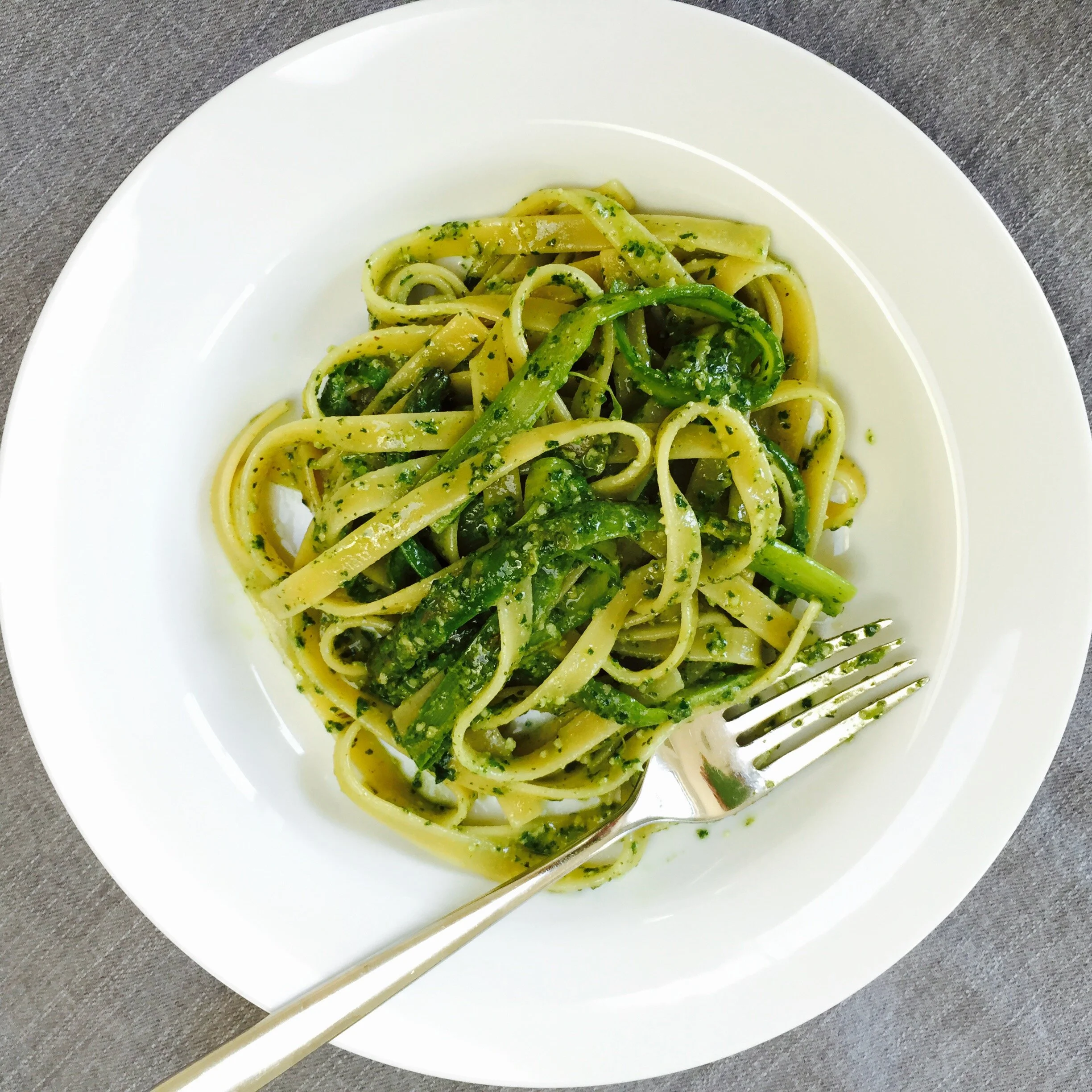Pasta Pesto
Pasta Pesto
Makes 1 cup (enough to coat 1 pound of pasta)
1/3 cup nuts (pine nuts, walnuts, pumpkin seeds,) optional
1 medium clove garlic
Kosher salt
2 cups packed basil leaves (see Note #1)
3/4 cup extra-virgin olive oil
1/2 cup packed grated Parmesan, plus extra for serving
Freshly ground black pepper
1 pound pasta
1. Fill a large pot 2/3 full with water, cover with a lid, and set over high heat. If it comes to a boil before the pasta is done, reduce the heat to low until ready to cook the pasta.
2. In a food processor, puree the nuts, if using, garlic, and a big pinch of salt until finely ground.
3. Add the basil and puree until finely chopped.
4. With the food processor running, drizzle the olive oil in a slow and steady stream.
5. Fold in the Parmesan and season to taste with more salt and pepper.
6. Now that the sauce is ready, it’s time to boil the pasta: to the pot of boiling water, slowly stir in enough salt so that the water tastes like the ocean - you’ll need to sample the water with a spoon, and will probably use a big handful of salt. (Make sure you add the salt slowly, as it sometimes bubbles over.) Let the water come back to the boil, drop in the raw pasta and gently stir so the pastas don’t stick together. Follow the packaging directions, reducing the time, though, by 2 minutes to start checking for al dente. Al dente means “to the tooth” in Italian — soft enough to easily bite into, but with some firmness on the inside of the noodle. (In other words, you don’t want it flabby throughout.)
7. Once your pasta is done, it’s time to sauce the pasta: you have two options: you can either lift it out using a pasta spoon or a spider, or you can drain the water out through a strainer. If you use the strainer method, you must scoop up and save about 1 cup of the pasta cooking water….this is the key to finishing your sauce. It’s what helps make a sauce delicious. Why? Because this water is starchy (it’s floury and it helps thicken the sauce) and it’s also salty. So it gives the sauce added flavor and texture.
8. Once drained from the pasta cooking water, place the pasta directly into your sauce, then toss it over low heat until the sauce is the right consistency. If it’s too loose, keep simmering and stirring the pasta. If it’s too thick, add a little pasta water. Serve right away with Parmesan cheese. Recipe by Jill Santopietro.
Note #1: You can substitute any leafy green or herb (parsley, mint, spinach leaves, kale leaves, arugula) for some or all of the basil. I like to leave at least 1 cup of basil in though for that pesto-flavor.
Note #2: You can freeze pesto. It’s best to leave out the Parmesan before freezing and add it to the thawed pesto before serving.
Note #3: What should you do with leftover pesto? Swirl it into a salad dressing, add it to mayo for a new sandwich spread, mix it into sour cream or yogurt for a vegetable dip, garnish soup or meats and eggs with it.
Note #4: Before boiling your pasta, it’s a good time to look around your kitchen to see if there are any vegetables that need blanching…green beans, broccoli florets, you name it. Use the salted water for other cooking tasks before you add the pasta. You can add these greens to your pesto sauce just before tossing the pasta into it. In this photo (recipe), I added blanched and then thinly peeled asparagus to the fettuccini pesto.

